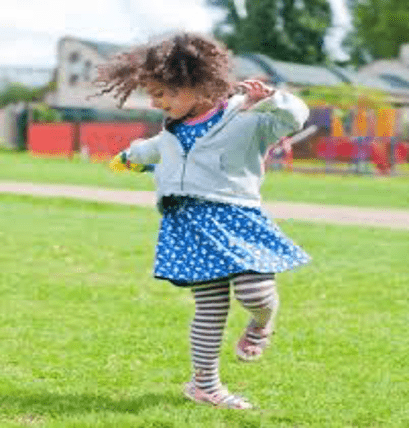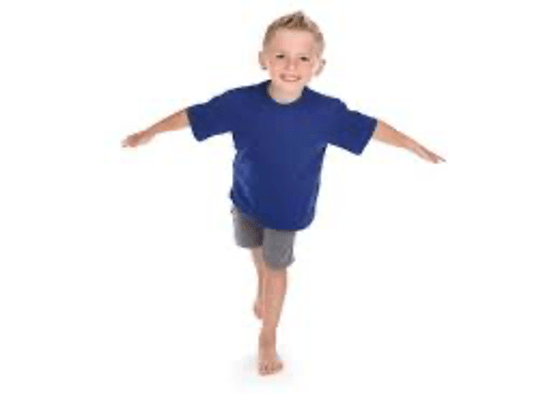Key Stage 1
Self-Esteem Activities
Many children are suffering from anxiety. Our self-esteem activities are created to provide children with strategies to reduce anxiety, build self-confidence, resilience, and positive relationships.
Paper balls
Ask the children to write down on a piece of paper a question for example:
How many brothers or sisters do you have?
What is your favourite subject in school?
What is your favourite food?
Ask the children to scrunch their paper up and then throw it into the middle of the floor. The children will then pick up a paper ball and stand in a circle. Ask the children to unravel the ball of paper and answer the question. They can then throw the ball again and choose another ball and answer a different question.
Benefits:
This interactive activity allows he children to get motivated by moving around the room. It builds on communication, confidence and self-esteem as the children answer the questions. This activity is useful for children getting to know each other.
Resources:
- Paper
- Pencils
Rainbow activity
Ask the children to write short sentences all about themselves shaped in a rainbow. Then using coloured pens they can draw around the rainbow with stars, smiley faces, hearts, patterns, and shapes to make it bright and colourful.
Once the children have completed the activity they can share with the class.
Benefits:
This activity helps build children’s self-esteem and communication skills, allowing them to find their unique qualities.
Resources:
- Paper
- Pencil
- Coloured pen
Finish the sentence
Ask the children to finish the sentence in their own words.
I feel my future is positive because ……………………………
I love it when ………………………….
What I like about myself is ……………………………..
I will proud of myself when …………………………….
The people love are …………………………………….
My favourite things to do are ……………………………………
The children can then share their answers with the class if they wish to.
Benefits:
This activity allows the children to develop their self-awareness. It builds self-confidence and communication skills.
Resources:
- Paper
- Pencil
Download the accompanying activity
Scarf swapping
Provide each child with a coloured scarf. Ask the children to walk around the room. When you shout change that means change direction. When you shout swap that means that the children will stop and swap scarves with the person closest to them. The children will then ask the person they are swapping scarves with a question. Give the children some examples such as favourite colour, food, football team, best friend, family members etc. You may need to write these examples on the board at the beginning of the activity.
Benefits:
This fun and interactive activity develops communication, self-esteem and motivation. It is a useful activity for children getting to know each other.
Resources:
- Board
- Pens
- Scarves
Shout out
Ask the children to lie on the floor and relax the body from the head to the toes, one body part at a time, with their eyes closed. Shout out an affirmation one at a time for the children to repeat after you. Shout the affirmation many times with meaning. You can then say it loud, quiet, slowly:
I am strong
I am brave
I am beautiful
I am courageous
I am amazing
I am loved
I am powerful
I am worthy
You can add other affirmations of your choice.
Ask the children to sit up and write down some affirmations of their own. The children can stand in a circle and take turns shouting their affirmations loudly with meaning encouraging them to feel strong and powerful as they say them.
Benefits:
By helping the children to relax this enables them to quieten their mind and focus on the activity. This activity develops self-esteem, confidence, promotes positivity and can release emotions. It encourages children to recognise all their good qualities.
Resources:
- Paper
- Pencils
Post it note description game
Choose one child to come to the front of the class and face away from the children. Choose another child to write on a post it note a word such as an animal, object or person of their choice and stick it on the child’s back. The child then asks the pupils questions to try and identify what the answer is. The children can only answer questions yes or no.
Benefits:
The child develops communication, vocabulary, self-esteem, patience, turn taking and confidence.
Resources:
- Post it notes
- Pencils
Being unique
Put the children into pairs and ask them to discuss how they are different from each other. Give the children some examples such as eye colour, favourite food, family members, and favourite thing to do. The children can write down their differences. When the children have completed the task ask them to share with the class. Explain that we should not compare ourselves to others as we are all unique and special in our own way.
Benefits:
The children will gain an understanding that we are all different and unique in our own way and should celebrate our uniqueness. This activity builds self-esteem, confidence, communication, vocabulary and team building.
Resources:
- Whiteboard or IWB
- Paper
- Pencils
Download the accompanying activity
Stand up comparison game
Ask the children to stand up if they wear glasses, like football, have blue eyes, like the colour green and so on. This activity allows the children to recognise the differences between their peers and celebrate their uniqueness. Choose some children to be the teacher and say some comparisons. Explain that if we all looked and behaved the same with the same voice and personality life would be uninteresting this is why we should celebrate our individuality.
Benefits:
This fun and engaging activity helps children recognise their individuality developing self-awareness, confidence and physical development.
Resources:
No resources
Compliment activity
Moving from one child to the next around the classroom ask each child to say something nice about the person next to them. Ask the children to put their hands up and explain how it feels when we give and receive a compliment. Explain to the children that complaints can make people feel better in themselves therefore it is important to share compliments in the classroom.
Benefits:
As some children may not receive compliments this activity is important for children to understand the power of compliments of how it makes them feel receiving and giving compliments to others. Encourage compliments in the classroom. This activity builds self-esteem, confidence, positivity, communication and team building.
Resources:
No resources
Speech activity
Discuss with the children the importance of kind words. Ask the children to write down kind and unkind words and discuss how these words make us feel. Ask the children to share their views with the class.
Benefits:
This activity allows the children to express themselves, developing self-esteem, communication, vocabulary, listening skills and relationships.
Resources:
- Paper
- Pencils
Download the accompanying activity
Myself activity
Ask the children to write down 3 things they like about themselves. Use examples of what you like about yourself. Choose children to share with the class. Encourage the children to share their ideas to support confidence building.
Benefits:
This activity develops children’s self-confidence, communication and positivity. It encourages children to focus on their good qualities.
Resources:
- Paper
- Pencils
Download the accompanying activity
Staying healthy
Ask the children to write down all the ways to keep themselves healthy and discuss with the class for example eating healthy foods, giving examples – exercise, meditation, yoga, being mindful, positive relationships and focusing on positivity and gratitude. Ask the children to share their ideas with the class.
Benefits:
This activity allows children to become aware of how to keep themselves healthy, the benefits of this and how it effects mood and physical development. It improves self-esteem, physical and emotional development and positivity.
Resources:
- Paper
- Pencils
Download the accompanying activity
Positivity in school
Ask the children to discuss all the things that are positive about being in school such as making positive relationships, learning new things, having fun, and writing down the children’s ideas on the board. This allows the children to focus on the benefits of school and positivity.
Benefits:
This activity highlights the importance and positive aspects of going to school. This is particularly beneficial for children who may struggle in school or have a negative outlook on school. It develops positivity and gratitude.
Resources:
No resources
Download the accompanying activity
Special people activity
Ask the children to discuss all the special people in their life and why they are special. Ask the children to share their findings with the class. Encourage the children to write as many people as possible and focus on identifying the good qualities in that person and how they support the child in their life.
Benefits:
This activity improves children’s relationships, confidence building, positivity, communication and gratitude.
Resources:
- Paper
- Pencils
Download the accompanying activity
Unique chart
Ask the children to draw a grid with 6 squares. Ask the children to write in each box:
3 positive words to describe myself
Something you have achieved
A compliment someone has given you
Favourite thing to do
Something you have overcome
If you could travel anywhere in the world where would you go?
Choose children to share with the class. Explain that we should not compare ourselves to others as we are all different but rather celebrate our individuality.
Benefits:
This fun and engaging activity improves children’s self-esteem, confidence and communication. It encourages children not to compare themselves to other people and focus on their own individuality.
Resources:
- Paper
- Pencils
Download the accompanying activity
Body language
Ask the children to stand against a wall in a line. Demonstrate to the children how I would walk if I had no confidence with shoulders hunched, eyes facing downwards, back arched, looking sad, walking slowly. Ask the children how they think you are feeling. Ask the children to discuss what body language you were displaying to show you were feeling sad. Ask the children to take turns walking towards you looking sad.
Next, demonstrate looking angry by stomping feet, eyes glaring towards them, face looking serious. Again ask the children how they think you are feeling. Ask the children to discuss what body language you were displaying to show you were feeling angry. Ask the children to take turns walking towards you looking angry.
Next, demonstrate looking confident by looking straight ahead, shoulders back and down, eye contact, smiling, straight back. Again ask the children how they think you are feeling. Ask the children to discuss what body language you were displaying to show you were feeling confident. Ask the children to take turns walking towards you looking confident.
Explain to the children that when you are feeling confident you automatically feel more positive and happier in yourself. Explain that when you are open to other people they react to you in a more positive way for example by smiling back at you.
Play a game and choose children to demonstrate a feeling using one of the above body languages. The other children can guess how that person is feeling.
Benefits:
This activity improves self-confidence, positivity, positive relationships, self-esteem and communication.
Resources:
No resources
Positive opinions activity
Sit the children in circles or at their table. Ask the children to work in small groups and say 3 good things about each person. This allows children to hear other people’s opinions about them in a positive way.
Benefits:
This activity highlights the good qualities in each child building self-confidence, improving relationships and positivity.
Resources:
No resources
3 compliments activity
Ask the children to write down 3 compliments someone has given them. Remind the children this can be from a family member, teacher, friend, neighbour. Ask the children share one of their compliments with the class.
Benefits:
This activity highlights the child’s good qualities and reminds them of how other people view them. It builds self-esteem and positivity.
Resources:
- Paper
- Pencils
Download the accompanying activity
‘My day’ activity
At the end of the day ask the children to discuss their favourite part of the day. Give the children some examples such as what has made them smile or laugh, what has inspired them. Ask the children to continue this activity every night at home before going to sleep. This allows the child to focus on positivity and gratitude.
Benefits:
This activity highlights positivity and gratitude. This allows the children to focus on positive aspects of their day rather than negativity.
Resources:
No resources
Download the accompanying activity
Compliment notes
Ask the children to write down some affirmations such as ‘You are beautiful’, ‘You are unique’, ‘You are kind’. The children will then fold the notes and put them into a small bag. The children can then go around the class and ask their peers to remove a compliment out of the bag.
Benefits:
This activity builds self-esteem communication skills and positive relationships.
Resources:
- Paper
- Pens
- Small bag
Movement
Ask the children to stand on a mat or in a space. Ask the children to close their eyes, listen to the music and move their bodies. This activity can also be completed with the eyes open. Using a range of music ask the children to express themselves using their bodies. You may want to use a range of music such as calming music, classical music, or dance music to allow children to express a range of emotions.
Benefits:
This activity provides children with the space to express their creativity using the body. It allows them to be themselves, be present in the moment and free from judgement, improving their self-acceptance and building self-confidence.
Resources:
- Mat
Pom-pom and cup game
Put the children into pairs. Provide one child with a cup and one with a pom pom. Ask the children to stand one metre apart. The child with the pom pom will throw it towards the cup, while the child with the cup tries to catch it. Once the child has caught it 3 times they can swap places. Children can also swap places with different peers in the classroom.
Benefits:
This activity is created to promote positive relationships, build self-esteem, eye and hand co-ordination and communication.
Resources:
- Pom poms
- cups
Copy me game
Ask the children to stand with their hands by their sides and their feet together. Explain to the children that you are the leader and they will copy your movement. Mindfully and slow move your hands and feet in different ways for example wiggling your fingers, moving the legs up and down, touching the head. The aim is mindfully and slowly move the body. The children will copy your movements. Then choose specific children to be the leader. Explain that the other children will copy the leader.
Benefits:
This activity is to allow children to be mindful and present in the moment. It promotes focus, awareness, physical development, and concentration. It builds self-esteem and positive relationships.
No resources needed

Open Hours
M-F: 9am - 5pm
Sat: CLOSED
Sun: CLOSED












